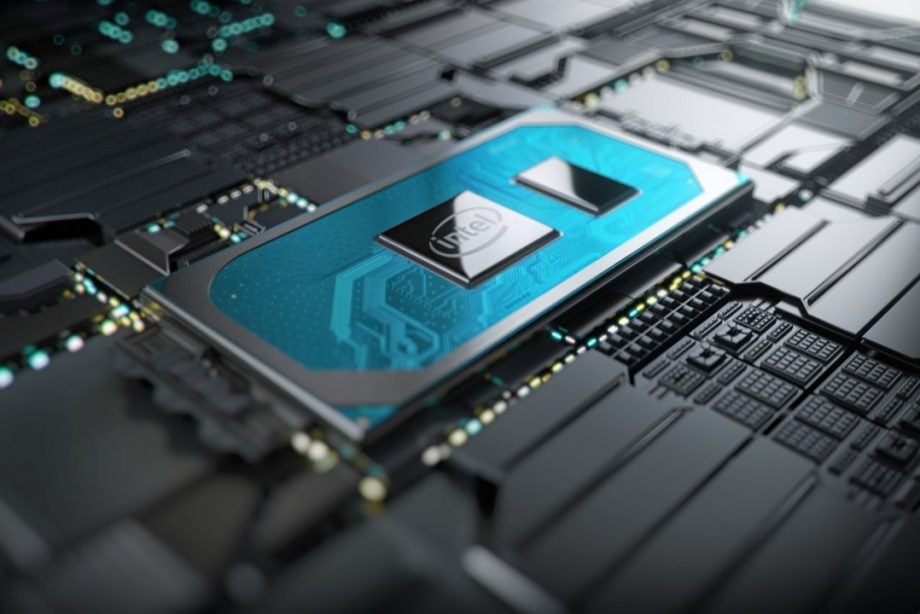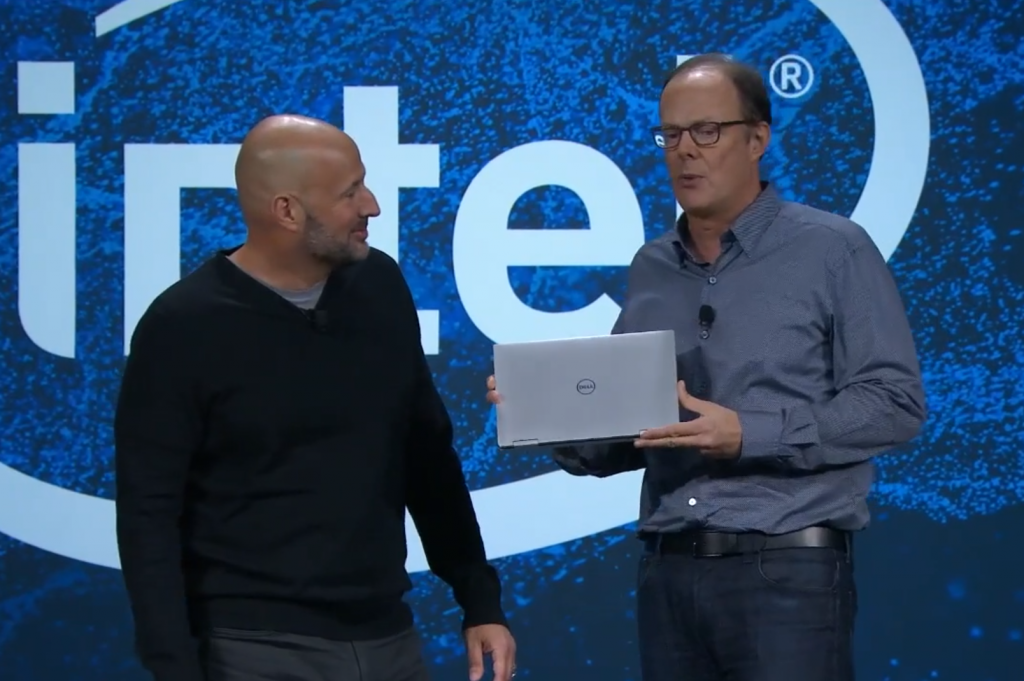Intel 10th Gen mobile CPUs: All you need to know about Ice Lake laptop processors

Intel’s 10th Generation Ice Lake mobile processors are set to give laptops a performance boost, as portables begin to appear on shelves housing either Intel’s Ice Lake or Comet Lake CPU.
The former of the two, Ice Lake, is arguably the most exciting, as not only does it offer new levels of processing performance, but also flaunts integrated graphics powerful enough to usurp low-level graphics cards.
Intel’s Ice Lake chip won’t just boost gaming performance, but also promises to be more battery efficient than laptops with a discrete graphics cards, so you can get hours upon hours of gaming on the go.
Other features Ice Lake chips will bring to laptops include accelerated artificial intelligence performance and new and improved connectivity options such as WiFi 6 and Thunderbolt 3.
Multiple laptops have already been confirmed to feature the Ice Lake processors, including the Dell XPS 13 2-in-1, while Microsoft is expected to announce Surface Laptop 3 and Surface Pro 7 portables which will feature the new chip.
Read on for everything else we know about Intel’s 10th Generation Intel Core processors.
Related: Best Intel Processors
What is Intel Ice Lake?
Ice Lake is the latest CPU platform from Intel, becoming the company’s 10th generation of processors. It will be the first mass market mobile CPU family to use a 10nm manufacturing process.
Having a smaller component means more transistors can fit on the die, and in turn, increases the chip’s performance. Intel also suggests the smaller 10nm process will allow laptop manufacturers to create thinner and lighter devices without sacrificing performance power.
Ice Lake isn’t the only mobile 10th Generation processor from Intel though, with 10th Gen Comet Lake mobile CPUs also announced. The Comet Lake CPUs are capable of a higher core and thread count, theoretically giving them better processing power particularly for multitasking with multiple applications. This makes Comet Lake laptops ideal for productivity.
Comet Lake processors do however lack an integrated graphics engine, so they’ll need to be paired with a discrete GPU in order to run video games or intensive creative applications. This means Ice Lake is the superior option for those who want an ultra-portable ultrabook capable of low-level gaming and multimedia creation.
Related: AMD Navi
Intel Ice Lake specs – what are the specifications for the Ice Lake processors?
Intel confirmed there will be 10th Gen Intel Core processors in both the U-Series and Y-Series, with the former looking to generally offer higher frequencies while also consuming more power which will consequently see battery life plummet quicker.
You’ll also notice Intel has altered its numbering scheme for Ice Lake with the “Gx” suffix indicating this is an Intel Ice Lake processor with integrated graphics. The number following the “G” shows the the level of graphics, with “G7” currently the most powerful.
Intel recently has detailed the specs for every one of its 11 PC SKUs found in the Ice Lake family. You can see those specs for yourself in the tables below.
U-Series
| Processor name | IA Cores/ Threads |
Graphics | Cache | Nominal TDP / ConfigUP TDP |
Base Freq (GHz) | Max single Core Turbo (GHz) | Max All Core Turbo (GHz) |
| Intel Core i7-1068G7 | 4/8 | Intel Iris Plus | 8MB | 28W | 2.3 | 4.1 | 3.6 |
| Intel Core i7-1065G7 | 4/8 | Intel Iris Plus | 8MB | 15W / 25W | 1.3 | 3.9 | 3.5 |
| Intel Core i5-1035G7 | 4/8 | Intel Iris Plus | 6MB | 15W / 25W | 1.2 | 3.7 | 3.3 |
| Intel Core i5-1035G4 | 4/8 | Intel Iris Plus | 6MB | 15W / 25W | 1.1 | 3.7 | 3.3 |
| Intel Core i5-1035G1 | 4/8 | Iris UHD Graphics | 6MB | 15W / 25W | 1.0 | 3.6 | 3.3 |
| Intel Core i3-1005G1 | 2/4 | Iris UHD Graphics | 4MB | 15W | 1.2 | 3.4 | 3.4 |
Y-Series
| Processor name | IA Cores/ Threads |
Graphics | Cache | Nominal TDP / ConfigUP TDP |
Base Freq (GHz) | Max single Core Turbo (GHz) | Max All Core Turbo (GHz) |
| Intel Core i7-1060G7 | 4/8 | Intel Iris Plus | 8MB | 9W / 12W | 1.0 | 3.8 | 3.4 |
| Intel Core i5-1030G7 | 4/8 | Intel Iris Plus | 6MB | 9W / 12W | 0.8 | 3.5 | 3.2 |
| Intel Core i5-1030G4 | 4/8 | Intel Iris Plus | 6MB | 9W / 12W | 0.7 | 3.5 | 3.2 |
| Intel Core i3-1000G4 | 2/4 | Intel Iris Plus | 4MB | 9W | 1.1 | 3.2 | 3.2 |
| Intel Core i3-1000G1 | 2/4 | Iris UHD Graphics | 4MB | 9W | 1.1 | 3.2 | 3.2 |
Intel Ice Lake features – what features will Ice Lake bring to laptops?
Intel’s next gen Ice Lake mobile CPU doesn’t solely offer a performance boost for laptops. It also brings several key features to the table, including optimised artificial intelligence for a smarter performance, a new integrated graphics engine to improve gaming performance and improved connectivity options with Thunderbolt 3 and Wi-Fi 6 along for the ride.
We’ve detailed each feature in more detail below so you know exactly what you’re getting with Intel’s new Ice Lake processors.
Intelligent performance
Intel isn’t just beefing up the specs for the 10th Gen Intel Core processors to improve performance for lightweight laptops, it’s also using artificial intelligence to make the chips work smarter and more efficient.
One of the features Ice Lake toting laptops will be able to benefit from includes Intel Deep Learning Boost. This is a new dedicated instruction set which is claimed to accelerate neural networks on the CPU to maximize the responsiveness for intensive tasks such as automatic image enhancements, photo indexing and playing around with photorealistic effects. Intel claims the DL Boost gives Ice Lake CPUs an 8x performance boost when compared to rivals.
Intel also revealed the Ice Lake processors will rock up to 1 teraflop of GPU engine compute. This allows laptops to provide a high and stable performance when dealing with the likes of real-time video resolution upscaling and video stylization.
The final feature for ‘Intelligence performance comes in the form of the Intel Gaussian & Neural Accelerator (GNA), which is a dedicated engine for background workloads – such as voice processing (when using Cortana) and noise suppression – but runs at ultra-low power in order to increase battery life.
All-new graphics engine
One of Ice Lake’s stand out features is the new and improved graphics engine (Intel Iris Plus), which looks to significantly improve the GPU performance of laptops lacking a dedicated GPU. Intel suggests it has doubled the graphics performance of Ice Lake when compared to previous gen CPUs. An impressive claim, but what does this actually mean in practical terms?
Intel suggests laptops with an Ice Lake CPU will be able to play select games in Full HD with a smooth performance. Fortnite and Dirt Rally 2.0 were name dropped as titles which should see respectable frame rates in played in Full HD, which is very impressive. Of course, for more demanding video games like The Witcher 3 or Shadow of the Tomb Raider, you’ll still require a laptop with dedicated graphics card to see a solid performance.
Since the Intel Iris Plus graphics are based on Gen11 graphics architecture, Intel also boasts this is the industry’s first integrated GPU to be able to use variable rate shading, which should drastically improve the rendering performance.
Of course, the Intel Iris Plus integrated graphics has more uses than just boosting gaming performance. It also allows for high-end content creation. Intel lists off the likes of 4K video editing, quick application of video filters and high-resolution photo processing all being possible on a lightweight laptop with an Ice Lake CPU installed.
Connectivity
Let’s not forget the broader and improved connectivity options Ice Lake brings. Laptops featuring the CPU will be able to see up to four ports for Thunderbolt 3 integrated for the very first time. This means users will be able to hook up more peripherals and exterior devices, with Thunderbolt 3 offering up to 4x faster speeds than US3.1.
Ice Lake also brags Intel Wi-Fi 6 GIG+, which should see internet speeds boosted by 3x the performance of 802.11ac Wi-Fi found in previous generation laptops. This is a big boon for those who despise internet lag.
Related: Best Student Laptops 2019
Intel Ice Lake specs – how powerful will Intel Ice Lake laptops be?
The Ice Lake processors will come in Intel Core i3, i5 and i7 variants with up to 4 cores and 8 threads. The max turbo frequency will see clock speeds up to a whopping 4.1GHz. Meanwhile, the integrated Intel Iris Plus graphics will boost up to 1.1GHz.
But what do these figures actually mean for real-time performance? Intel claims Ice Lake’s performance is 18% faster than its Sky Lake chips, which isn’t exactly a massive boost considering the latter launched all the way back in 2015.
| Processor | Core i3, i5, i7 |
| Thermal Design Power | 9W, 15W, 28W |
| Cores/Threads | Up to 4 Cores / 8 Threads |
| LL Cache Size | Up to 8 MB |
| Max Turbo Frequency | Up to 4.1 GHz |
| Graphics Configuration | Intel Iris Plus up to 64EU Intel UHD Graphics |
| Graphics Frequency | Up to 1.1GHz |
| Integrated Wi-Fi | Intel Wi-Fi 6 (Gig+) |
| Integrated Thunderbolt 3 | Up to 4x |
| Memory | LP4/x-3733, DDR4-3200 |
The more impressive specs involves the graphical grunt, with Ice Lake featuring Intel’s shiny new Gen11 integrated graphics architecture. The architecture features support for the gaming focused Intel Adaptive Sync technology, which aims to smooth frame rates, and will offer up to 1 TFLOP of performance.
According to Intel, the platform will also be the first to feature Thunderbolt 3 and WiFi 6 support and Intel’s custom AI-focused DL Boost tech.
Related: What is WiFi 6?
Intel Ice Lake release date – when will Intel Ice Lake laptops come out?
Intel has confirmed Ice Lake is shipping right now, so you should expect to see laptops rocking the Intel Lake processor hitting shelves before Christmas 2019.

The very first sneak peek of the new Dell XPS featuring Ice Lake
Excited about Intel Ice Lake or planning to stick with AMD Ryzen? Let us know on Twitter @TrustedReviews


